The Comanches Are Coming
Camping with Comanche Teens in Colorado
And like Gandalf on the fifth day, I have returned. We’ve been extraordinarily busy here in Colorado over the last few weeks and unfortunately my obligations have meant that my writing has had to take a backseat for a bit. But guys, I have SO MUCH to share with you. So let’s start with a good one.1
If you recall, I spent much of last December in Oklahoma visiting with many of the tribes that I work with. One of those tribes is the Comanche Nation, who I’ve had the great privilege of getting to know a little bit since I’ve been out in Colorado. During a meeting, one of the elders voiced his concern that many of the tribal youths had begun to consider Oklahoma solely as Comanche homeland. Comanches, he told me, were not solely from the Great Plains, but were also Mountain people. Wouldn’t it be great if we could get some kids out to the mountains to think a little bit differently about their culture and history?
“Well, sir,” I replied. “I can do that.”
Over the last seven months I’ve been working with my colleagues at the Comanche Nation Tribal Historic Preservation Office to bring 50 Comanche teenagers out here to Colorado. And I’m writing to you now just a week removed from the conclusion of that amazingly successful trip. I wanted to share with you some of my thoughts, and frankly the love I have for the community nation and these amazing young people I got to know during the trip.
First, some history. I think like many of you my first exposure to Comanche culture in history, came via the big screen. My earliest memories of them are.With my grandfather as we watched 1950s movies that depicted heroic Cowboys fighting off menacing Comanche Raiders, who came thundering over the horizon to steal women and livestock. In these movies, Comanches are villains standing in the way of American progress. And movies like those reinforced negative stereotypes of native people while at the same time promoting a mythology of American exceptionalism.2
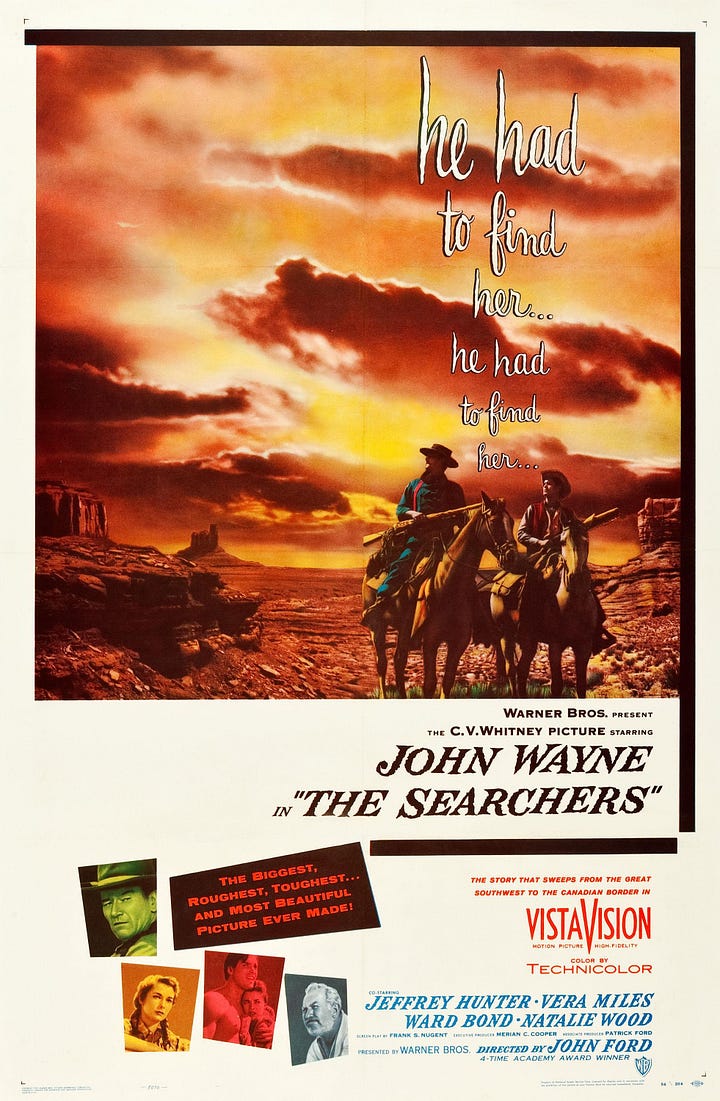
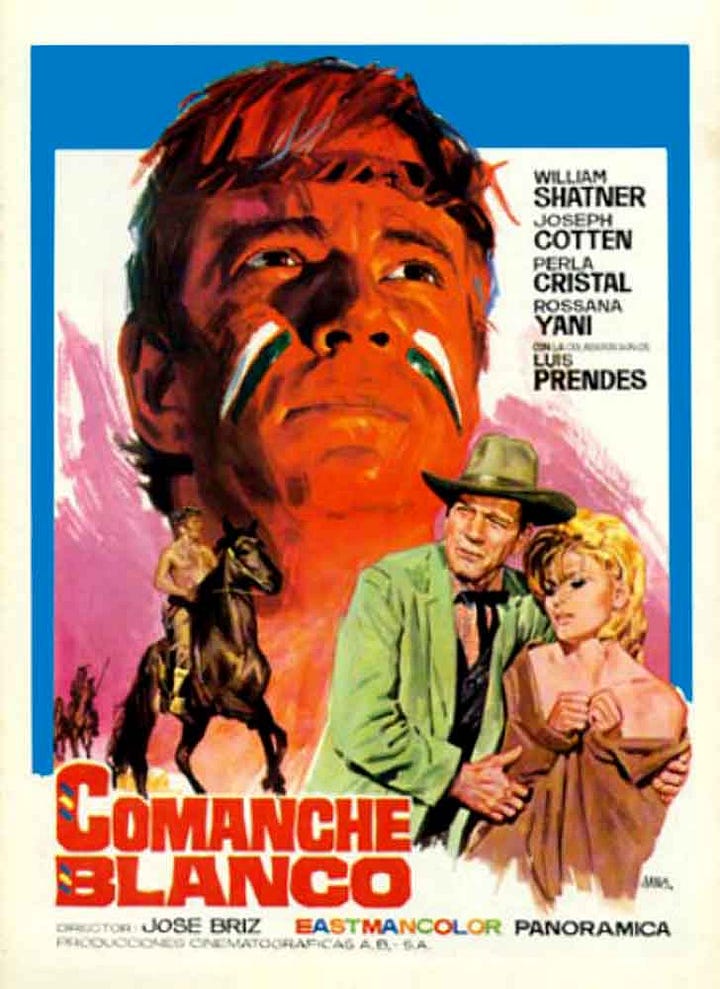
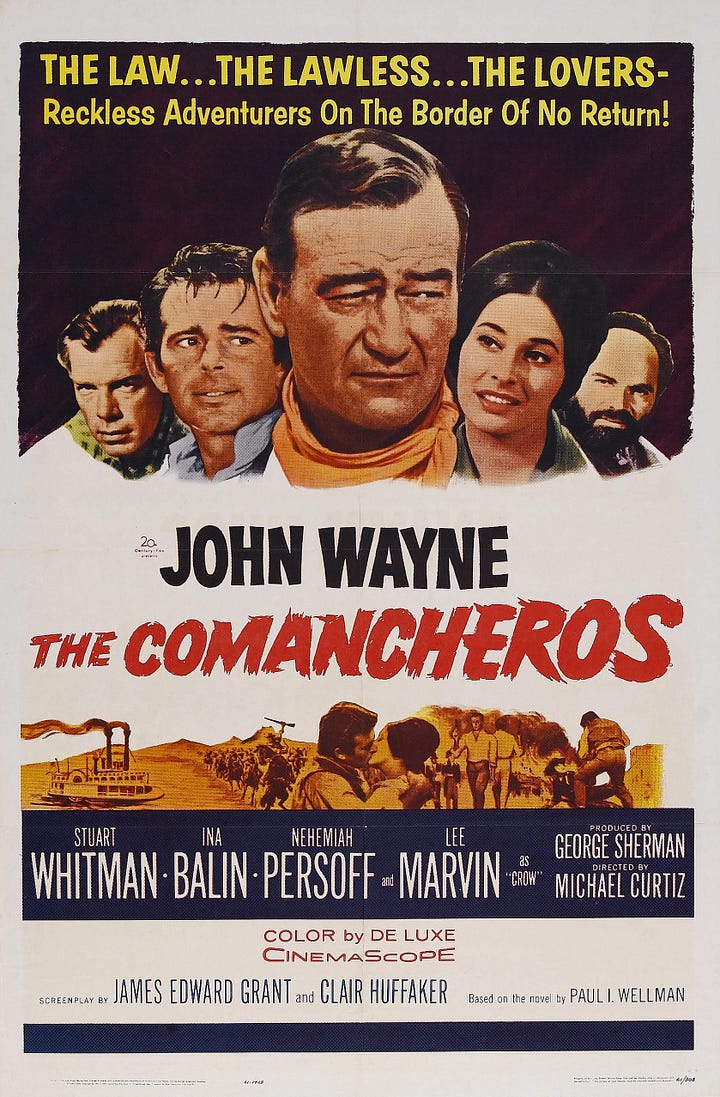
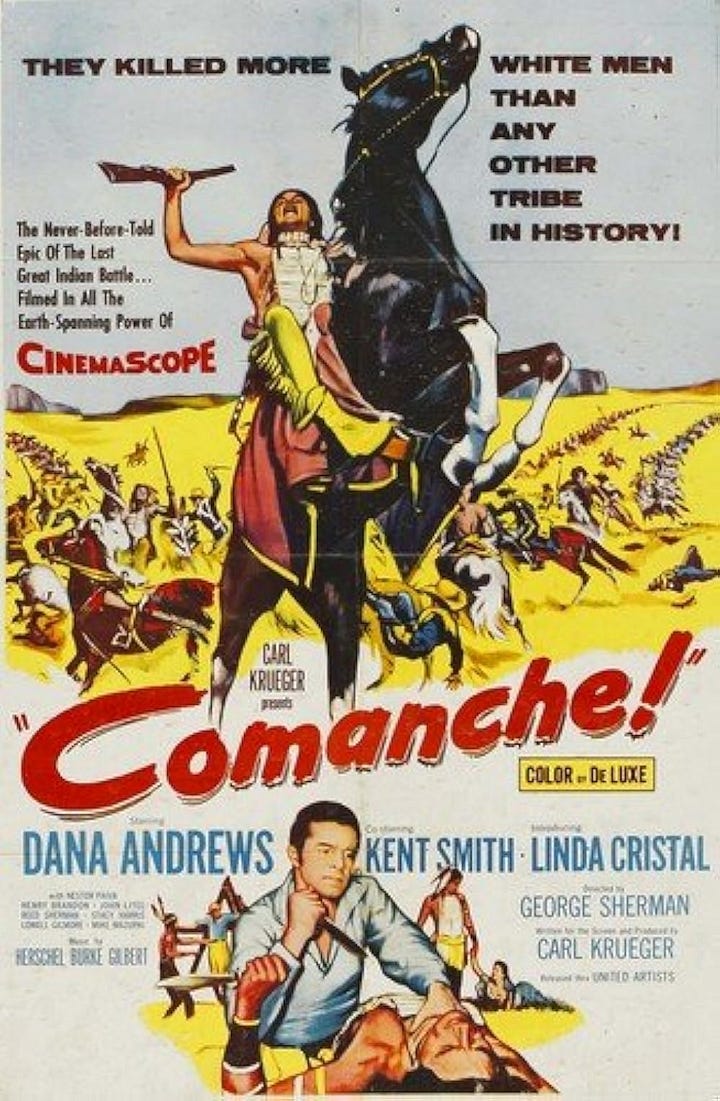
And of course they couldn’t be farther from the truth.
Now, Comanches of the 1700s and 1800s were raiders. Reading features heavily into the Comanche economy, as it did many other economies of the Southwest. And Comanche were really, really good at it. They had at one time a huge zone of control known now as Comancheria. You could read more about this in Pekka Hamalainen’s The Comanche Empire, which coincidentally was foundational in helping me become a scholar of Indigenous and environmental history.
But what those movies did not show was that in engagements against the United States, Comanches and other native people were defending their homeland against invasion from an imperial force. A really good book on this is my friend Brian DeLay’s War of a Thousand Deserts.
But let us return now to our time. Over the last several months, we’ve worked to find an ideal camping spot for these teenagers and located one on Bear Lake Campground in San Isabel National Forest. The campground is absolutely beautiful and sits at about 10,500 feet. It’s pretty high up there. My colleagues and I worked really hard to prepare the site ahead of their arrival week Saturday. I was blown away at the enthusiasm of my colleagues to help make this a reality. Folks, I was so excited at the prospect of seeing tipis on the mountain illuminated by campfires and stars in the sky and hearing Comanche songs for the very first time.
And then everything that could go wrong, did go wrong.
It turns out it’s a long way from Oklahoma to Colorado. And any number of things can happen. Unfortunately, the teenagers were delayed in arriving until late Saturday night. The trailer carrying the tipi poles broke down, forcing the nation to run and buy tents at the local Walmart. So when the kids arrived, it was 10:30 PM. And unfortunately, the wind started blowing something horrible, up to 60 miles an hour. So all of these kids were trying to construct their tents on the side of a mountain in a windstorm that we did not predict. Lordy.
When I awoke next morning, I used to find that almost every single tent been knocked down and destroyed by the winds. And yet these kids were so amazing. They just rolled with it. There were nothing but smiles and laughter on the mountain. So Buster and I took the kids for a hike all the way up on top of a ridge to get a view of the Spanish peaks which are sacred to a number of tribes, including the Comanches. The wind was blowing like crazy up there too. But look at this picture of us. We can barely stand because the winds are blowing so hard. But we are smiling and laughing and loving this place. What an amazing moment.
Here are a few more pictures from the day:
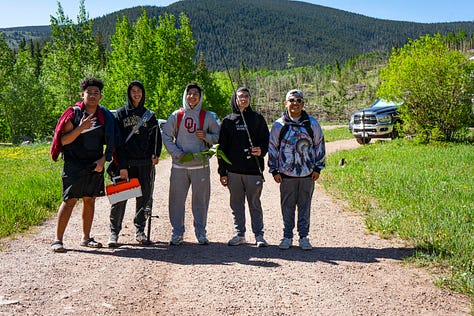
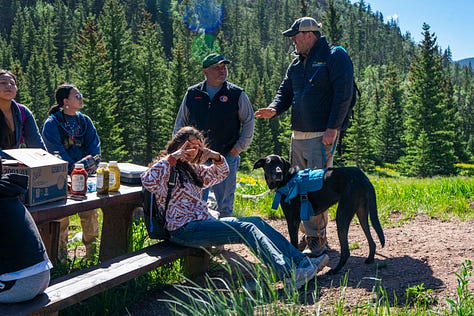
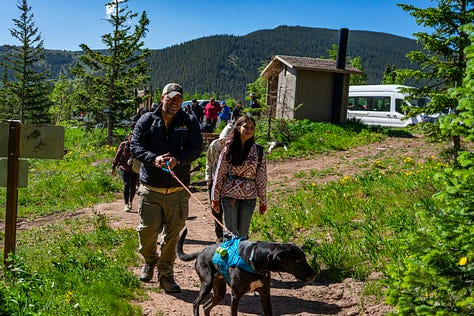
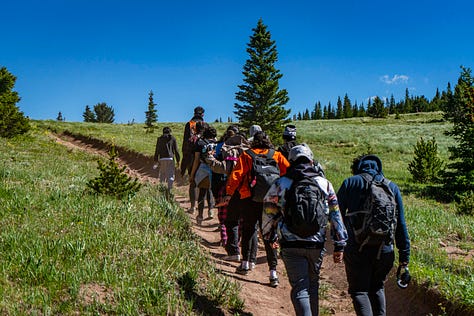
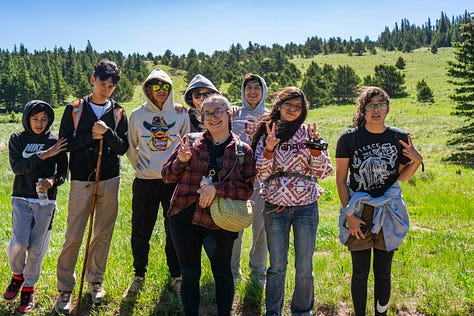
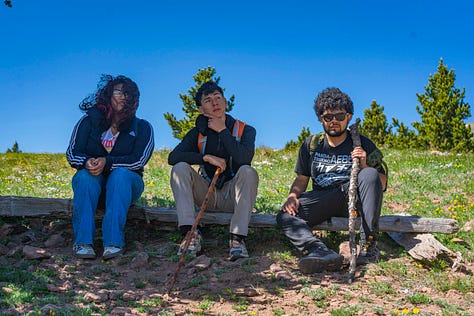
Unfortunately, the the wind was scheduled to get even worse at night, so with all of the tents being in bad shape, Comanche leadership made the decision to get hotels in Colorado Springs, where we could make new plans the next day.
So we got up Sunday morning and went to Garden of the Gods, which is this immaculate set of rock formations just outside of the city. This too is important to a number of tribes. And again the kids were laughing and smiling, and taking pictures as we walked along looking at the geology and animals of this place.
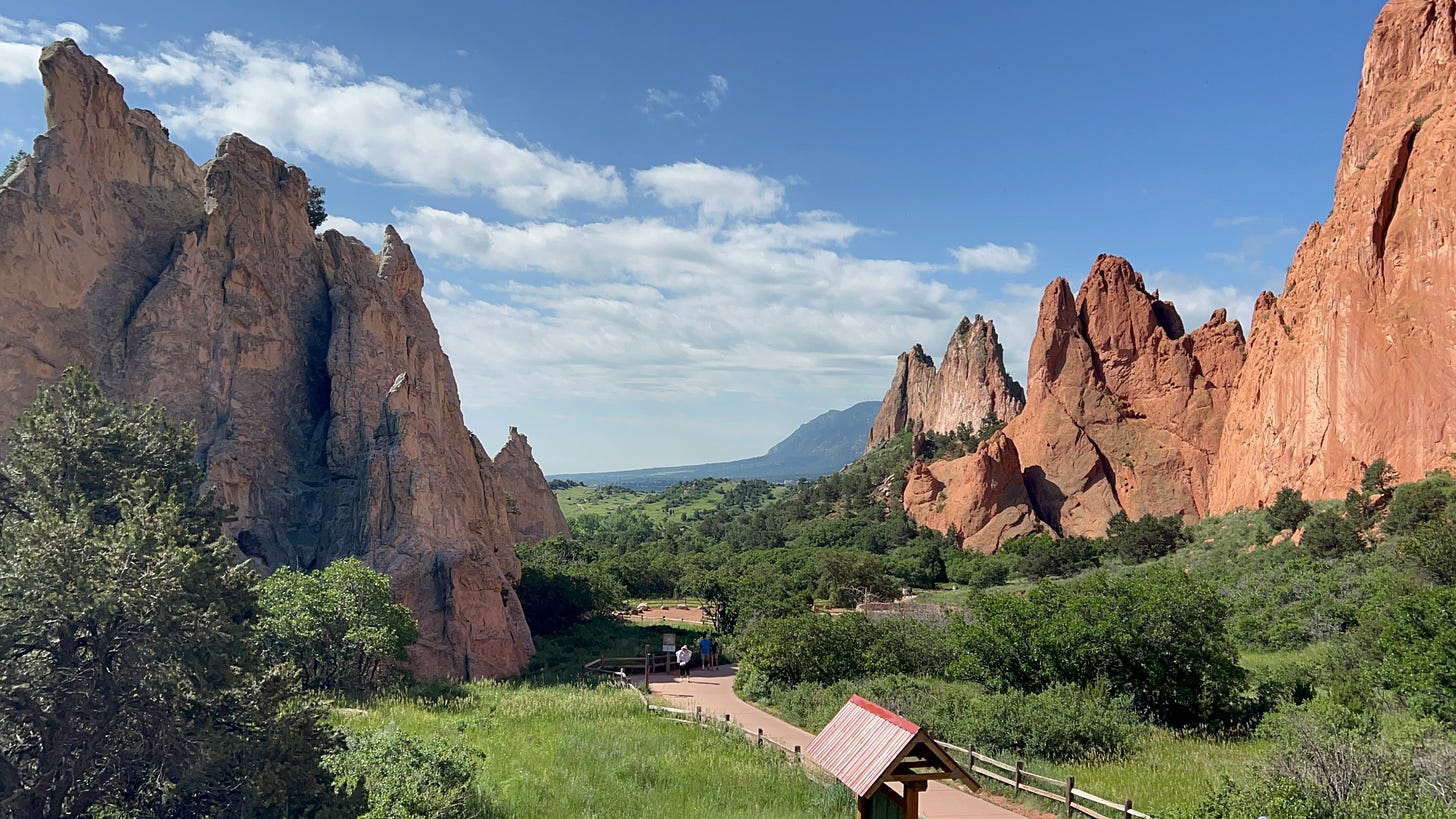
We even did a mock interview where the kids made me say the Comanche name an elder gave me last year:
Afterwards, we headed to Pikes Peak, which, you guessed it, is important to numbers of Indigenous peoples including the Ute, Cheyenne, Arapaho, Kiowa, Pawnee, and Jicarilla Apache. It has many names. The Comanche name is Pʉkʉra Anahabinʉ?a Karanʉ, meaning “place to pray and sit.”
We took our time working our way up the mountain eventually driving all the way to the summit at 14,115’. Gathering 50 kids together to take a group picture is not easy, but we managed to do it.
And as we dispersed to go and pray at another spot, something happened. I started crying. Well, crying is probably not a good word. I started weeping. Bawling. I had to put my sunglasses on. I think in the moment of spending this weekend with these kids.And thinking about what their trusted me meant, I was overcome with emotion. Maybe it was creator speaking to me. After all, last year, a Comanche Elder had told me that creator put me in Colorado to take care of these lands for them. Whatever it was, it hit me and it hit me hard and I don’t know that I’ve ever quite felt like that in all my time.
We talk a lot about introducing species to places. But what about people? What about understanding the legacy colonialism and imperialism and attempted genocide forced removal? And how do we heal those wounds? How do we move forward?
There was a long time when I thought I was gonna become a professor and teach at a university. And while I am under no illusions that I am going to fix things all by myself, I have come to understand that I have a place here. I have an obligation. I have the honor of working with all of these tribes who I love so dearly.
The next day, the kids surprised me by showing up at my office and singing to me before they headed back home. I cried again,
I like to think that the work that I’m doing here is important. That it has meaning. What I do not doubt is that it is driven by love.
-Pianaape
Thanks for reading this. If you want to help support my writing, you can do so by becoming a a paid subscriber at the button below, but all of this is free. Thanks for being here.
This story and pictures are shared with permission.
A great, at times heartbreaking, at others hilarious, documentary on this is Reel Injun, which you can view on tubi right now for free: https://tubitv.com/movies/667966/reel-injun


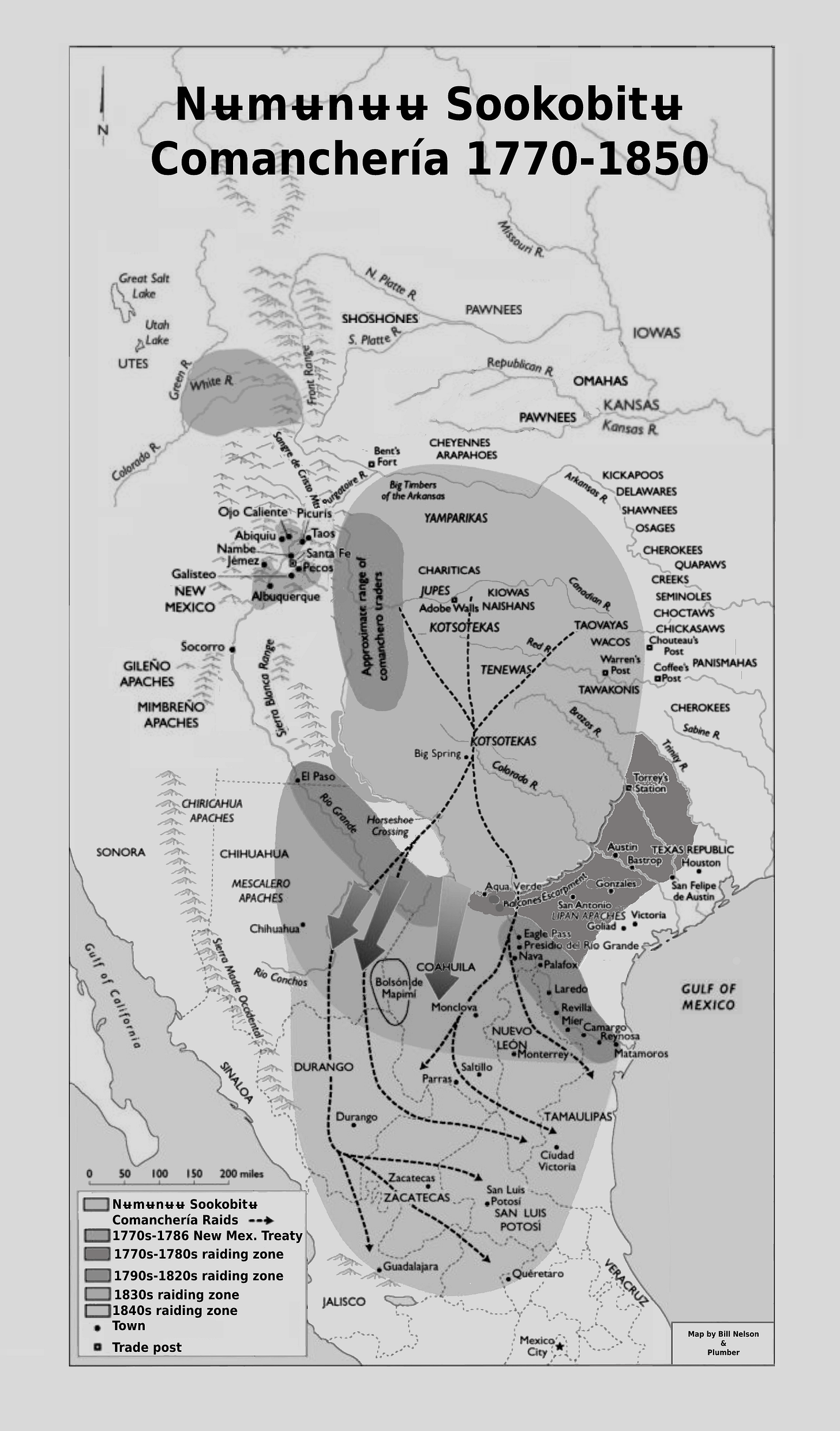
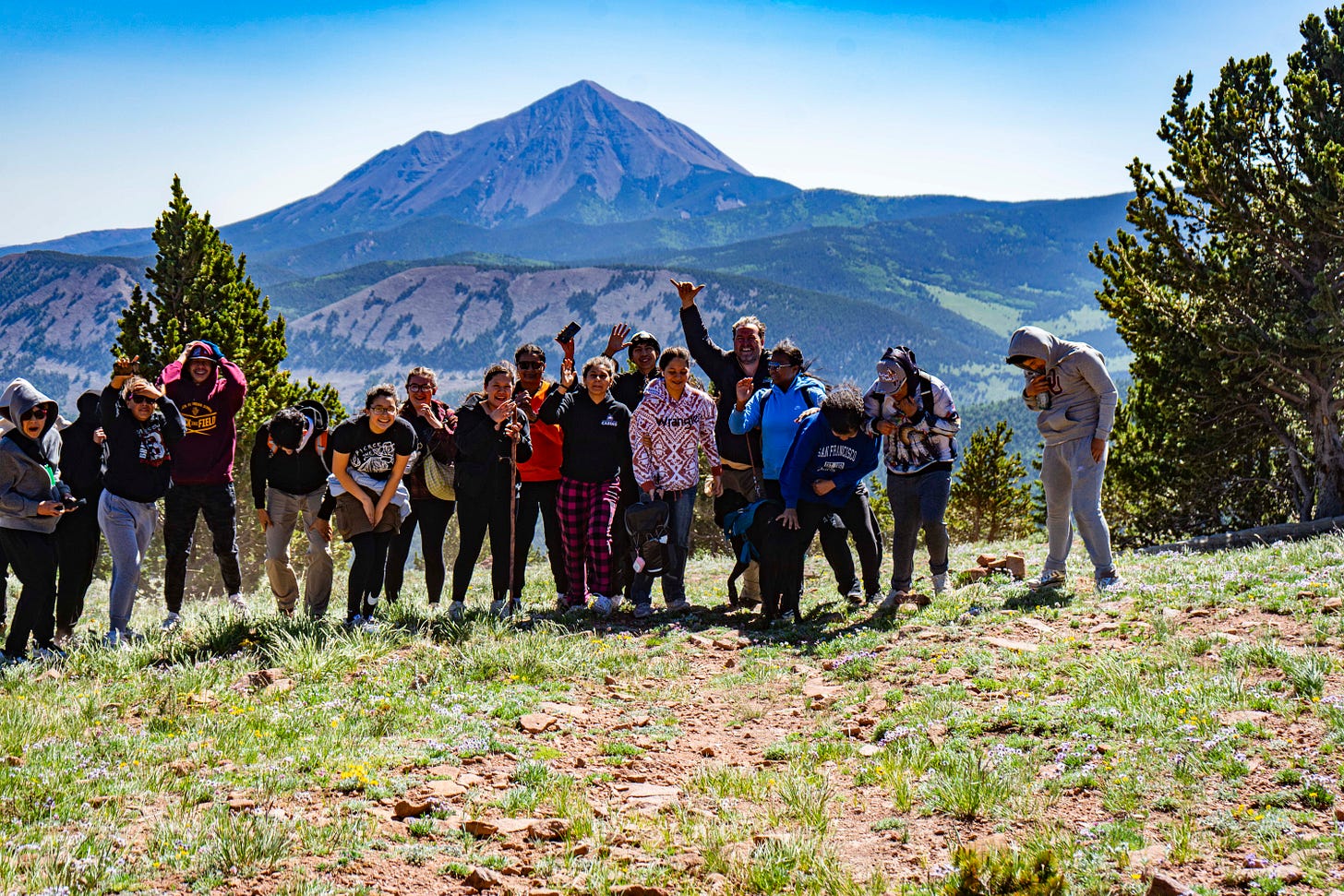
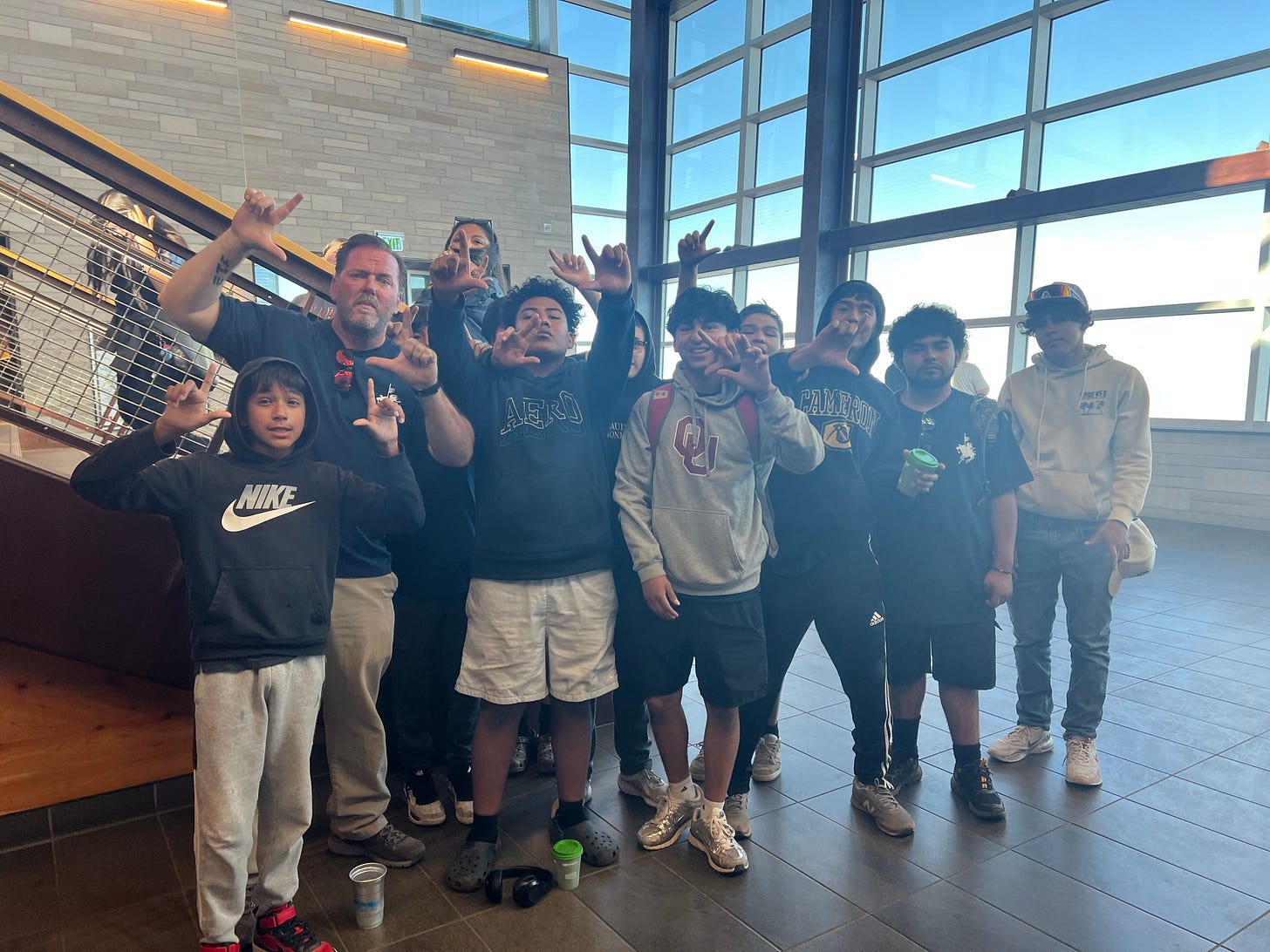
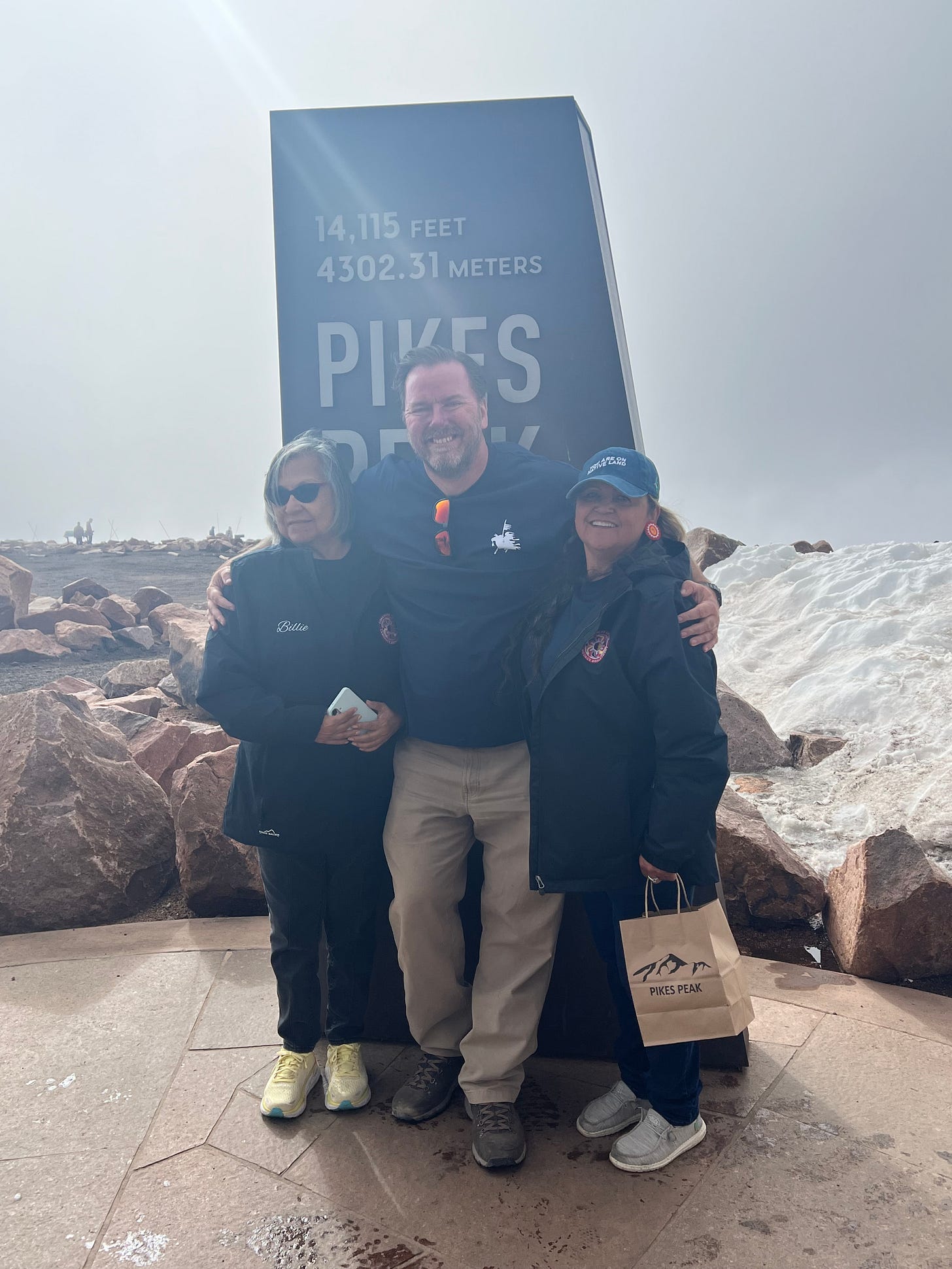
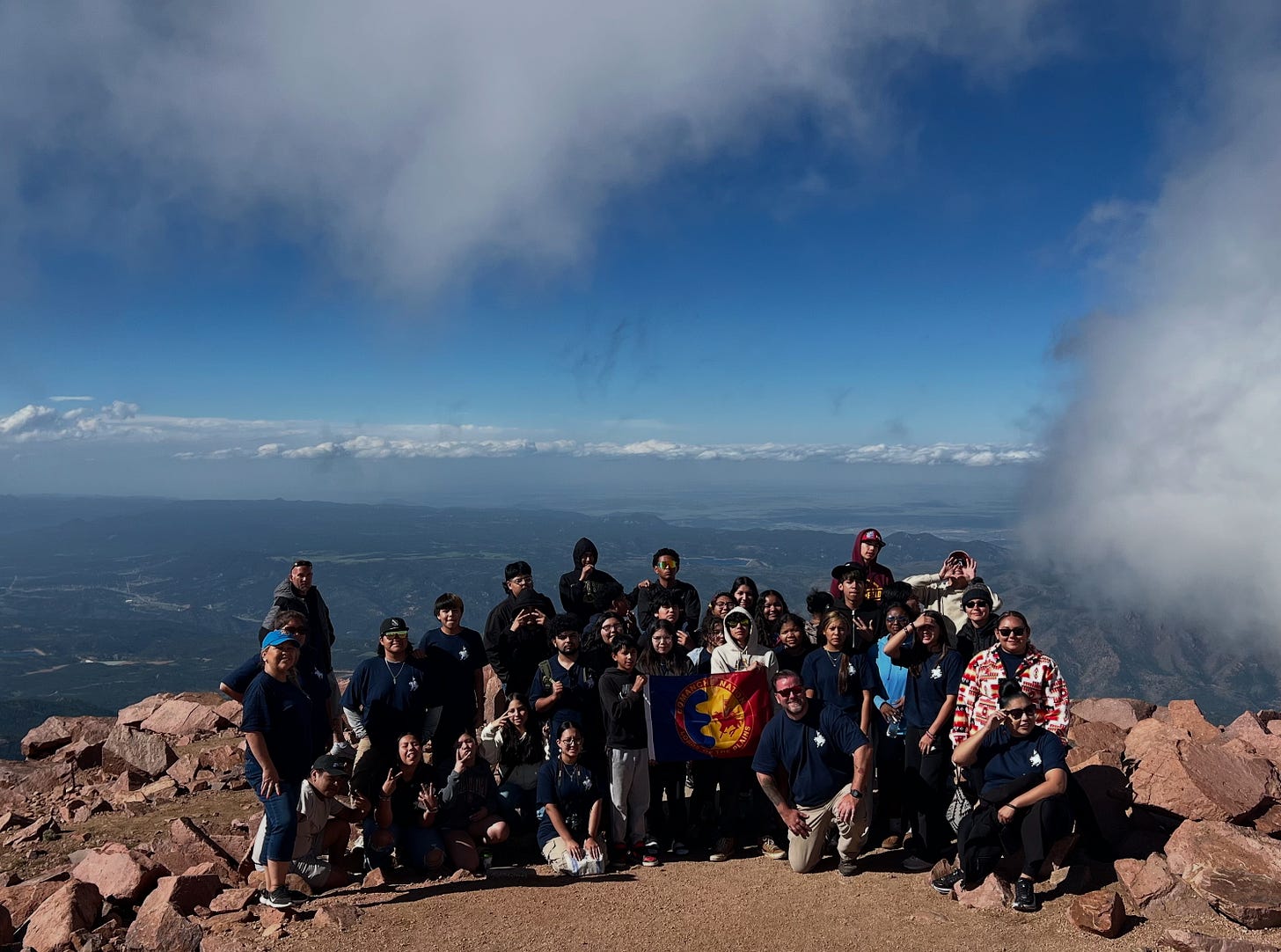
That’s awesome to bring these kids to see the mountains here in Colorado. The power of the land impacts everyone in a spiritually meaningful way. It always saddens me thinking about kids that live here in Denver who have never even gone to the mountains! Those kids will never forget this trip. Kudos to impacting their lives in this way!
This is the second time reading (or listening) to one of your pieces has brought me to tears. Thank you for sharing your stories.